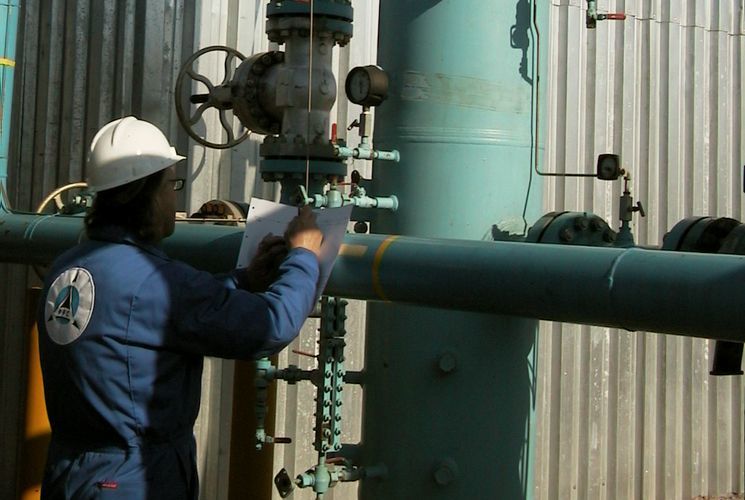
Oil extended gains following the biggest advance in three weeks after crude stockpiles unexpectedly declined from the highest level in more than eight decades.
Futures climbed as much as 1.5 percent in New York after rising 5.2 percent Wednesday, the most since March 16. Inventories slid by 4.94 million barrels as output fell for the 10th time in 11 weeks, according to a report from the Energy Information Administration. Refinery utilization increased before the summer peak driving season. Ecuador will host Latin American suppliers Friday to coordinate a regional position ahead of a meeting in Doha later this month to discuss freezing output, President Rafael Correa said.
“Production incrementally inching lower and higher refinery runs as we approach the driving season is positive for the market,” Ric Spooner, a chief analyst at CMC Markets in Sydney, said by phone. “An agreement in Doha will be difficult, although not impossible. A freeze at current high levels is not likely to have any lasting impact other than slightly influencing sentiment.”
Oil slid to a 12-year low this year before rebounding amid signs a global glut will ease as U.S. production declines. Prices have whipsawed since Friday on speculation about whether an agreement can be reached in Doha on April 17. Saudi Arabia said it will only freeze output if it’s joined by other suppliers including Iran, while Kuwait said a deal can be done without Iran’s support.
West Texas Intermediate for May delivery rose as much as 55 cents to $38.30 a barrel on the New York Mercantile Exchange and was at $38.10 at 12:50 p.m. Hong Kong time. The contract rose $1.86 to $37.75 on Wednesday. Total volume traded was about 7 percent below the 100-day average.
U.S. Output
Brent for June settlement climbed as much as 45 cents, or 1.1 percent, to $40.29 a barrel on the London-based ICE Futures Europe exchange. Prices climbed 5.2 percent to $39.84 on Wednesday. The front-month contract discount to the second-month was at 17 cents. The global benchmark crude was at a premium of 86 cents to WTI for June.
U.S. crude production dropped by 14,000 barrels a day to 9.01 million a day, the EIA said in a report Wednesday. Refinery utilization rates rose by 1 percentage point for a second weekly gain to 91.4 percent of total capacity. Imports fell to 7.25 million barrels a day, the lowest level in two months.
Oil-market news:
The Keystone oil pipeline that ships 590,000 barrels a day of Canadian crude to the U.S. may restart early next week after closing April 4 amid signs of a leak in South Dakota, according to TransCanada Corp. Iran plans to boost output to 4 million barrels a day by the end of the current Iranian year in March 2017, the oil ministry news service Shana reported, citing Oil Minister Bijan Namdar Zanganeh.